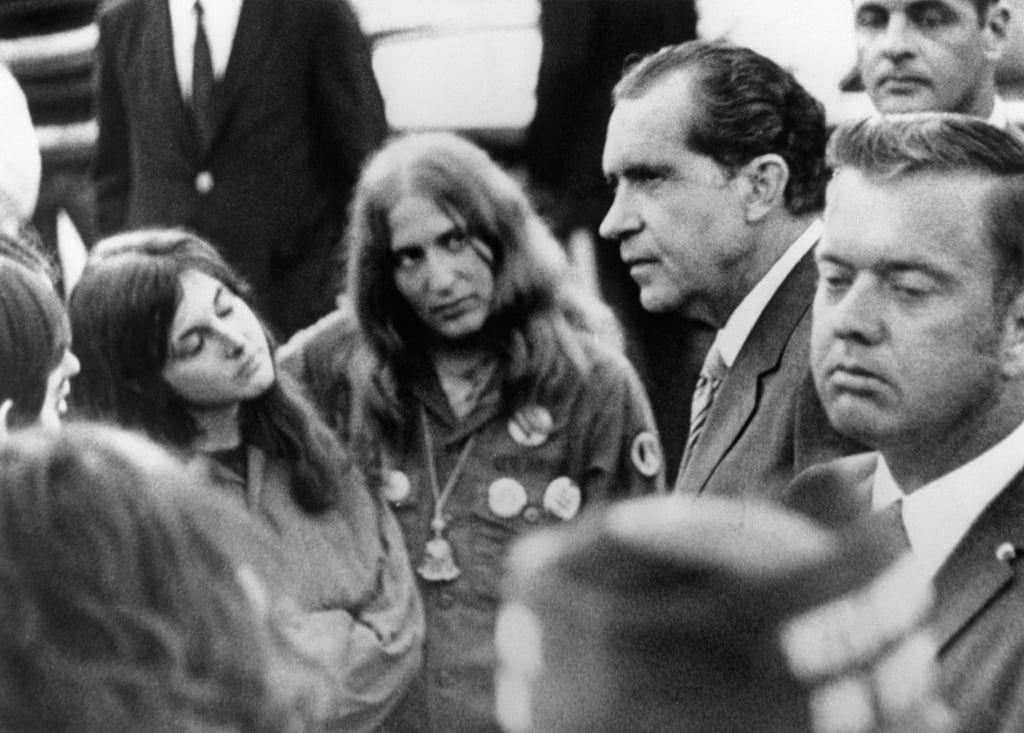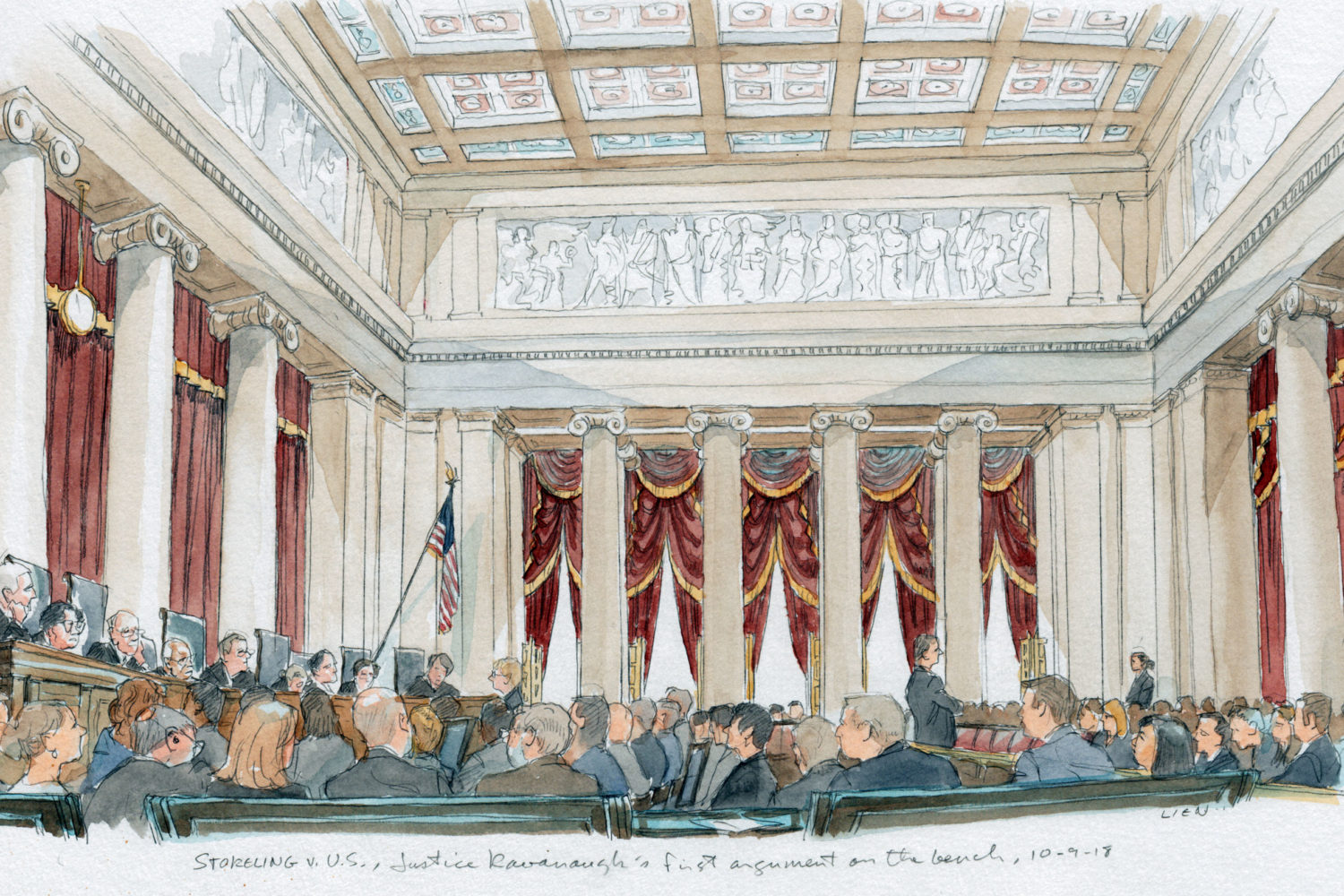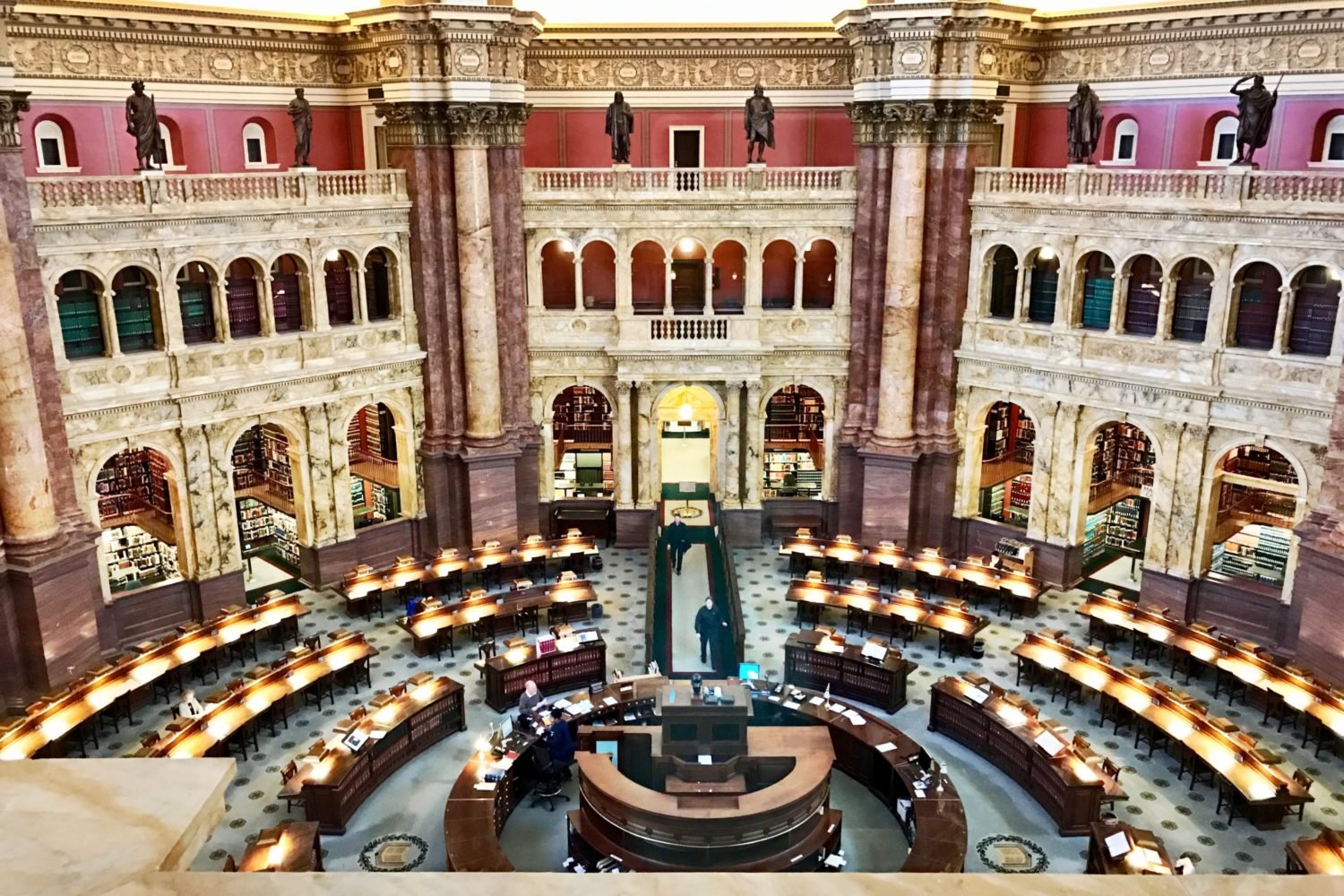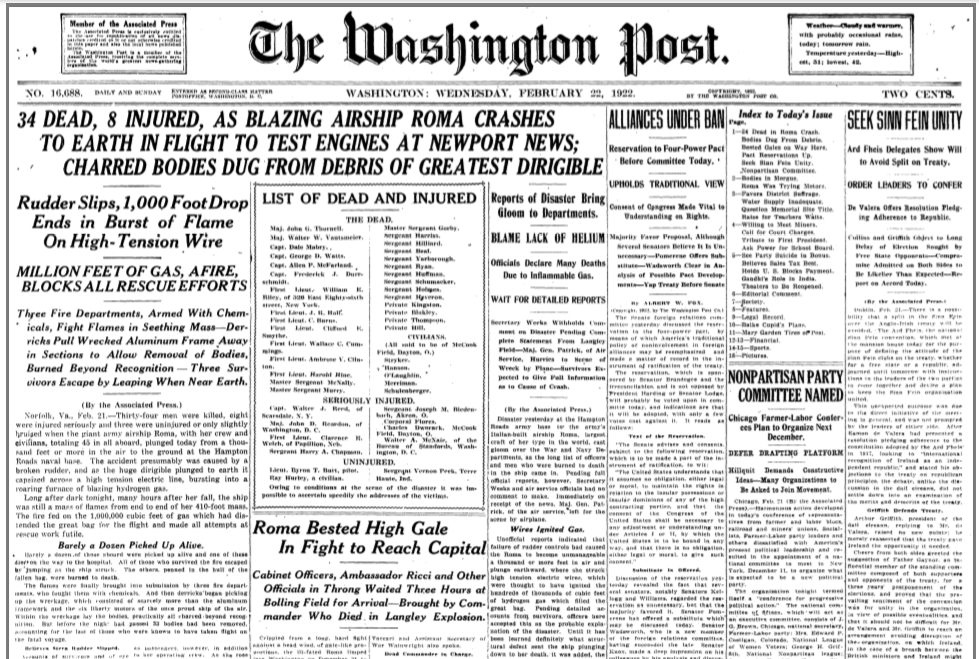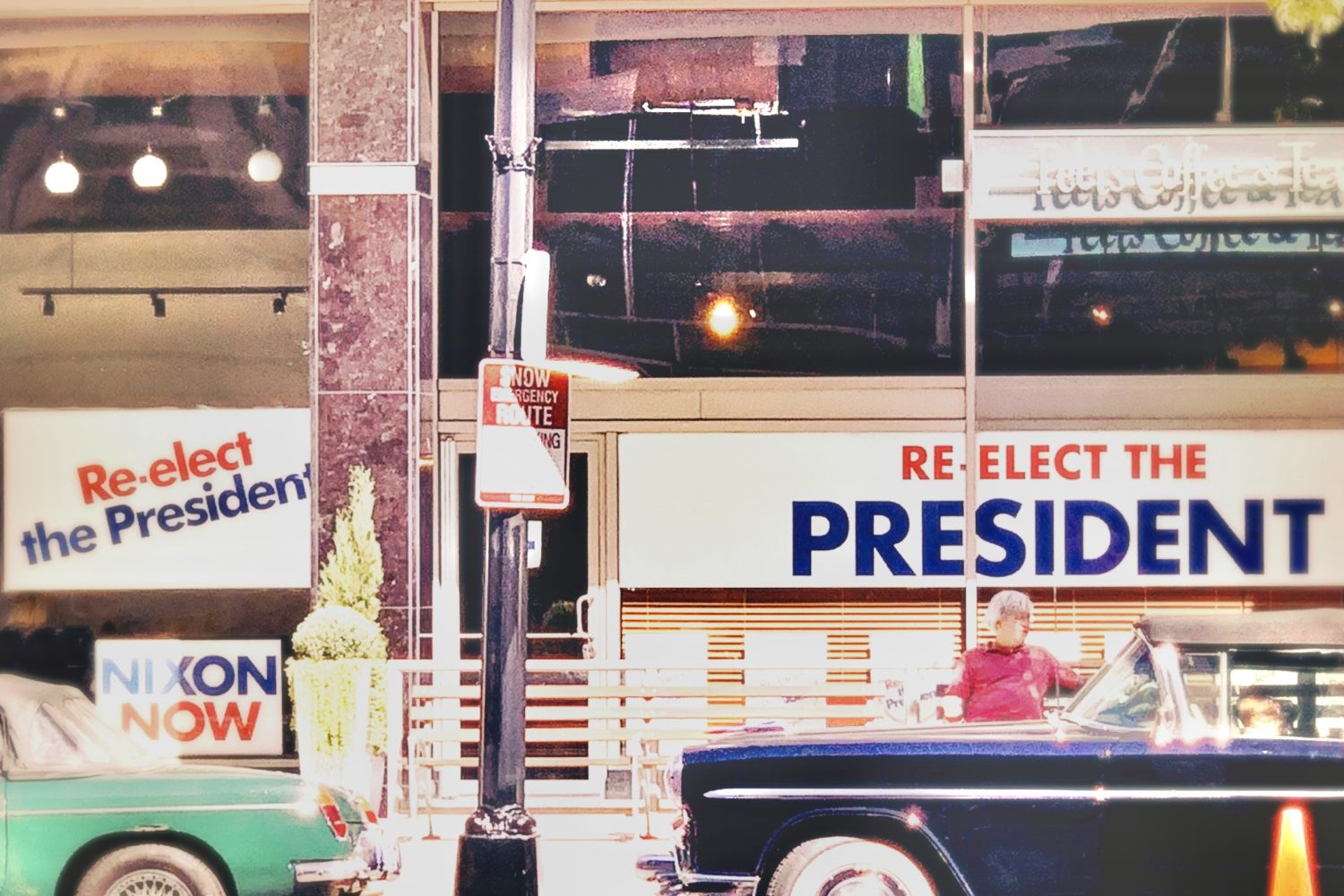The lead-up to what remains one of the most bizarre moments in Washington history began on the evening of April 30, 1970, when President Richard Nixon announced in a televised address that the Vietnam War was being expanded into Cambodia.
Four times during his talk, Nixon rose from behind his desk in the Oval Office and, looking like a stiff-limbed geography teacher, made his way to a map of the war theater set up on an easel. The North Vietnamese base camps along the Cambodian border glowed in red. One, dubbed the Parrot’s Beak, pointed directly to Saigon, and from not far away. It was, the President said, as close to the South Vietnamese capital “as Baltimore is to Washington.”
Near the end of his talk, Nixon appealed for calm, especially on America’s college campuses. But he expected blowback—and he got it, nowhere more tragically than at Kent State University in northeastern Ohio.
A weekend of increasingly violent confrontations between Kent State students and the Ohio National Guard—ordered to the campus by Governor James Rhodes—came to a head at midday on Monday, May 4. At noon, a force of more than 100 Guardsmen fitted with gas masks and carrying M-1 battle rifles fixed with bayonets moved out under a haze of tear gas, with orders to disperse a crowd of several thousand students, most of them peacefully assembled at the other end of the campus commons.
Twenty-four minutes later, what had been a worst-case scenario became horrifyingly real: Guardsmen unleashed a 13-second, 67-shot barrage of gunfire that left four students dead and nine wounded, one paralyzed from the waist down with a bullet lodged in his spine.
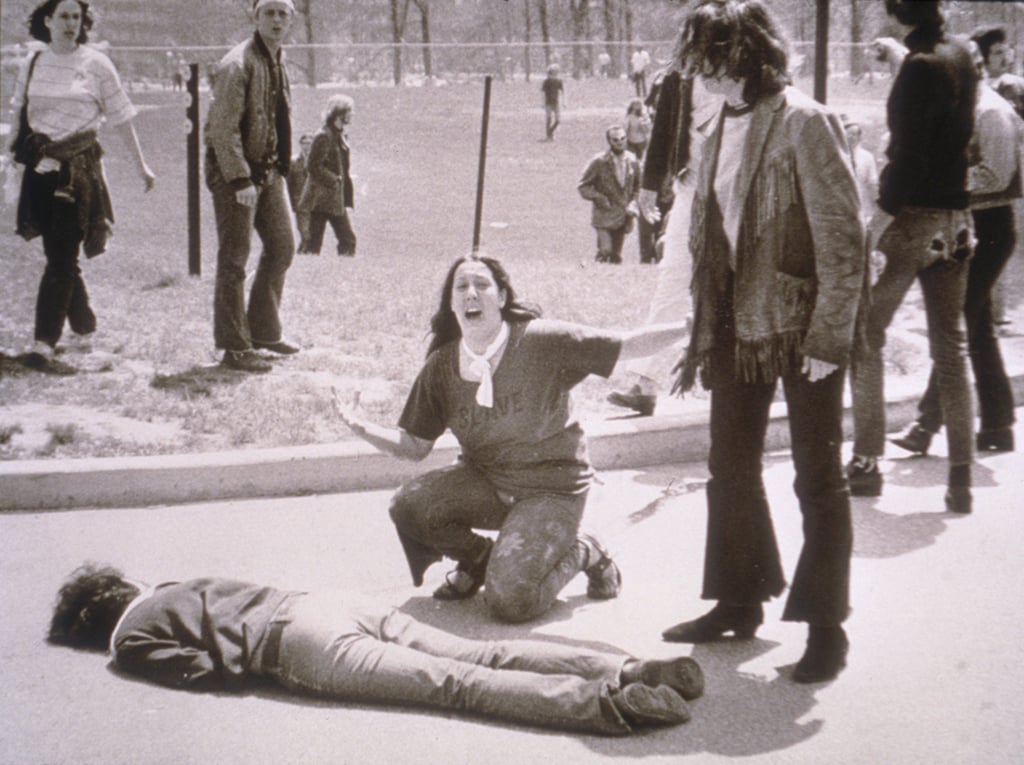
At the White House, chief of staff H.R. Haldeman waited until the President woke from an afternoon nap to tell him about the shootings.
“He’s very disturbed,” Haldeman wrote a short time later in his voluminous diaries. “Afraid his decision set it off…Issued condolence statement, then kept after me all the rest of the day for more facts. Hoping rioters had provoked the shooting, but no real evidence they did, except throwing rocks at National Guard.”
The Kent State shootings added urgency to a national student strike that had been hastily cobbled together after Nixon’s Thursday-evening address on Cambodia. The killings also swelled the ranks of those headed to Washington the following weekend for yet another antiwar demonstration on the Mall. As had happened at Kent State, moderate students across the nation found themselves suddenly radicalized by the shootings. Radicals, meanwhile, had a new reason to resort to stronger means of protest. All told, more than 450 US colleges, universities, and even high schools were disrupted by strikes.
At 1600 Pennsylvania Avenue, five days of damage control culminated in a Friday-night press conference. Afterward, an ebullient Nixon retired to the living quarters of a White House ringed once more by DC Transit buses and protected by elements of the 82nd Airborne, bivouacked in the Executive Office Building next door. On TV, Nixon had been, by his own reckoning, the voice of reason, alternately stern and conciliatory—a masterful performance. At what passed for home, though, the President of the United States was starting to think outside the box.
“The weirdest day so far,” Haldeman began his diary entry for Saturday, May 9.
“Started with call from [domestic-policy adviser John] Ehrlichman at about 5:00 a.m., saying [the President] was at the Lincoln Memorial talking to students.”
Nixon, it turned out, couldn’t sleep Friday night—and couldn’t stop talking, either. Between the end of his 10 pm press conference and 3:30 the next morning, the White House logged 50 phone calls from the President, eight to national-security adviser Henry Kissinger alone. Shortly after the last call, Nixon roused his valet, Manolo Sanchez, to ask if he wanted some hot chocolate. Sanchez declined, but Nixon wasn’t discouraged. Had Sanchez ever seen the Lincoln Memorial, the President persisted. The valet apparently had not, and with that, the Night of the Weird began.
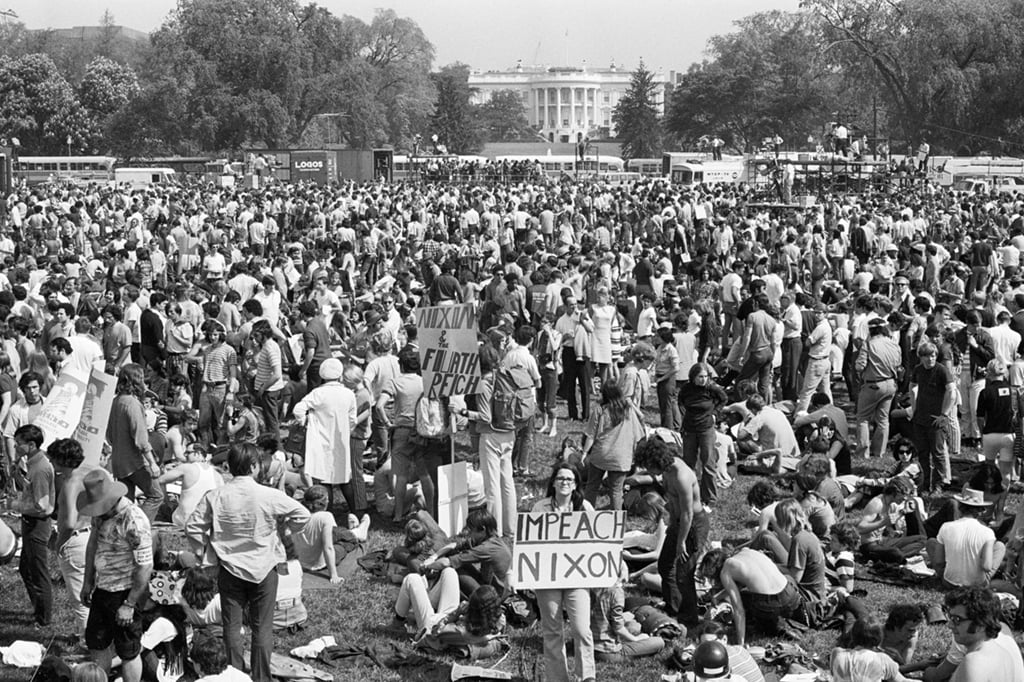
“I said, ‘Get your clothes on, and we will go down to the Lincoln Memorial,’” Nixon said in a version of events he dictated for the record several days later. “Well, I got dressed, and at approximately 4:35, we left the White House and drove to the Lincoln Memorial. I have never seen the Secret Service quite so petrified with apprehension.”
With cause. Protesters had already gathered at the memorial in advance of Saturday’s demonstration against the war, against the Kent State dead, against, most personally and viscerally, Richard Nixon himself. But a man on a manic high, as the President almost certainly was, and the commander in chief of the world’s largest army and his own Secret Service, as he constitutionally was, is not easily dissuaded.
A famous photograph captures the next scene: Nixon in suit and tie, the ski-nose profile tilted slightly forward, a handful of sleepy-eyed demonstrators listening in shock and dull amazement, maybe wondering what drug could have produced such an apparition, as the President reprised his press-conference triumph for an early-morning audience who, stranded on the Mall, hadn’t watched a moment of it.
“I said I was sorry they had missed it because I had tried to explain in the press conference that my goals in Vietnam were the same as theirs—to stop the killing, to end the war, to bring peace…There seemed to be no—they did not respond. I hoped that their hatred of the war, which I could well understand, would not turn into a bitter hatred of our whole system, our country, and everything that it stood for. I said, ‘I know you, that probably most of you think I’m an SOB. But I want you to know that I understand just how you feel.’ ”
I know that probably most of you think I’m an SOB. But I want you to know that I understand just how you feel.
That’s the President’s official account. The protesters would tell an alternate version to the press who descended on them that morning. Nixon mentioned Vietnam, but when that drew a tepid response, he moved to other topics. What college were they attending? One student was at Syracuse University, a chance for the commander in chief to talk about football. Another was from California—on to surfing.
Both accounts are in keeping with a President obsessed with war matters, battered by Kent State, challenged by small talk (aides commonly fed him three-by-five cards for such moments), and physically brave, but as the sun began to rise and word of the night visitor spread, even Richard Nixon had to acknowledge that it was time to leave.
Haldeman caught up with the presidential party at about 6:15, but not back at the White House. Manolo Sanchez had never seen the famous “well” of the House of Representatives, either. Having roused security there, the President was sitting at one of the House desks as his valet took to the same podium used for State of the Union addresses.
From there, and now also with press secretary Ron Ziegler in tow, the presidential entourage proceeded to the Mayflower Hotel on Connecticut Avenue for breakfast. Back at the White House finally and still unable to sleep, Nixon wandered over to the Old Executive Office Building to greet the soldiers who were just waking up in their sleeping bags on the fourth floor. And so it went the rest of the day: phone calls, the Oval Office, the Executive Office Building, everything but sleep.
“I am concerned about his condition,” Haldeman wrote in his diary later on Saturday. “The decision; the speech; the aftermath—killings, riots, press, etc.; the press conference; the student confrontation have all taken their toll—and he has had very little sleep for a long time and his judgment, temper and mood suffer badly as a result.”
Five weeks after the Kent State shootings, Richard Nixon authorized a formal study of campus unrest—what became known as the Scranton Commission, after its chairman, former Pennsylvania governor William Scranton.
Kent State, of course, was the centerpiece. A third of the commission’s final draft was consumed by a “special report” on what had happened, and why, on the Ohio campus.
The commission report was released on September 26, 1970. Nixon finally replied to Scranton in a December 10 letter that ran to 3,600 words, most of them decrying the anarchistic state of higher education and the wantonness of student demonstrators. The letter mentioned Kent State exactly once, in passing. For those hoping for some sort of federal-level legal resolution to the complicated issues of who had done what, when, why, and where on May 4 at Kent State, the President’s reply was not propitious.
Howard Means is a former Washingtonian senior editor whose first article for the magazine appeared 40 years ago. The author of ten books, he now lives in rural Virginia. This article is adapted from “67 Shots: Kent State and the End of American Innocence,” copyright © 2016 by Howard Means. Available this month from Da Capo Press, a member of the Perseus Books Group.

